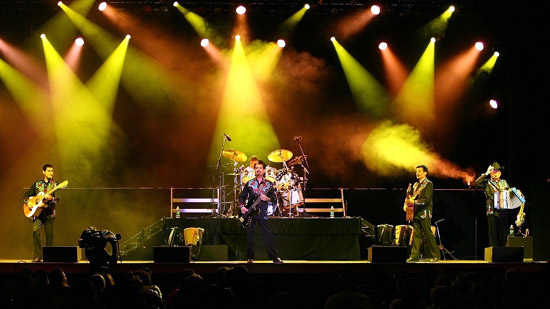Music: Modern Forms
The nation’s considerable size and population correspond with the largest media industry in Latin America, and help shed light on two defining characteristics of Mexico’s contemporary music industry: the country produces an immense quantity of material in numerous styles, and in contraposition to many of its Central American neighbors, does not consume a disproportionate share of music from abroad. In other words, the country balances musical imports (predominantly from the Americas) with the production of voluminous art made at home.
Classical
In terms of both infrastructure (symphony and opera halls) and personnel (composers, directors, and musicians), classical music in Mexico has been surprisingly competitive, considering the adverse economic conditions present; lack of funding and training have been known to stifle development of this particular genre throughout the developing world. Mexican classical music has it roots in the Roman Catholic Church, which of course reflected European techniques and ideals, including predominance of the piano as a compositional tool.One of the most important figures in the country’s musical history, Creole composer and musician Carlos Chávez (1899–1978) made his Mexico City concert hall debut at age 13 and spent a lifetime revitalizing the indigenous cultural traditions of his homeland. What was sometimes viewed as political radicalism, in conjunction with potent collaborations such as those with muralist Diego Rivera, garnered international attention for Chávez and helped solidify his reputation as a major 20th-century composer.
Contemporary Traditional
Contemporary Mexican artists are among the most famous in Latin America as well as parts of Europe and the United States. Groups like Los Tigres del Norte (norteño) and Banda el Recodo (banda) have triumphed both at home and across the northern border.
Mexico was the first place that cumbia was ever recorded outside of Colombia (in the 1950s), and its popularity has never dwindled. It has not only been adapted by folk ensembles—as is the case with accordion-heavy cumbia norteña—but has also been reinterpreted through fusion with a range of styles including those imported from Cuba (cumbia tropical) and electronic music (technocumbia).
Pop and Rock
Mexican pop is generally considered female territory, controlled by names like Julieta Venegas, Paulina Rubio, Thalía, and Lila Downs (the latter known for championing the indigenous cause through her music). One exception to the rule is Luís Miguel, winner of five Grammys whose mysterious personal life has intrigued fans the world over.
Maná and Café Tacuba are well-known ambassadors of Mexican rock, while instrumental duo Rodrigo y Gabriela are also enjoying international acclaim. Molotov is a respected representative of the growing Mexican hip-hop scene (ska and reggaeton are also becoming more popular).
Article written for World Trade Press by Dan DeMento.
Copyright © 1993—2024 World Trade Press. All rights reserved.

 Mexico
Mexico 